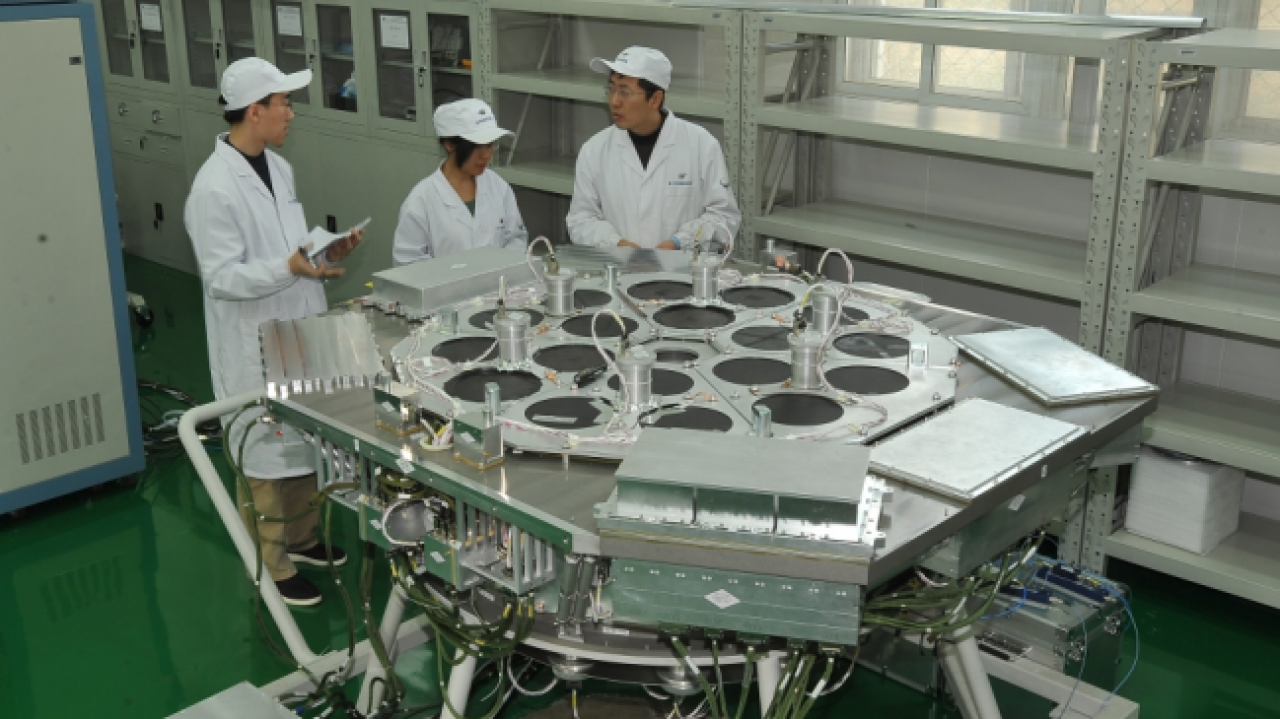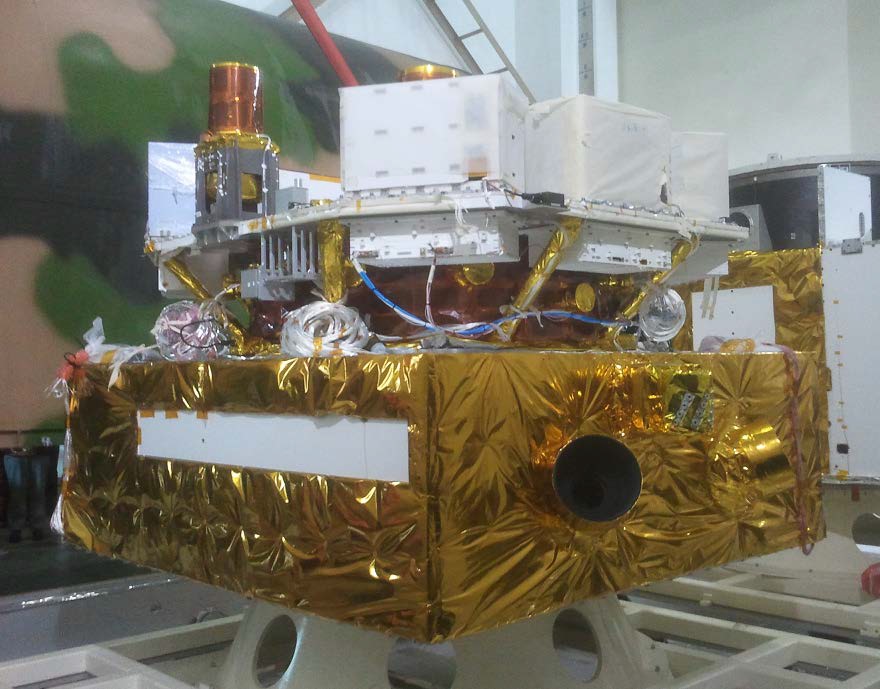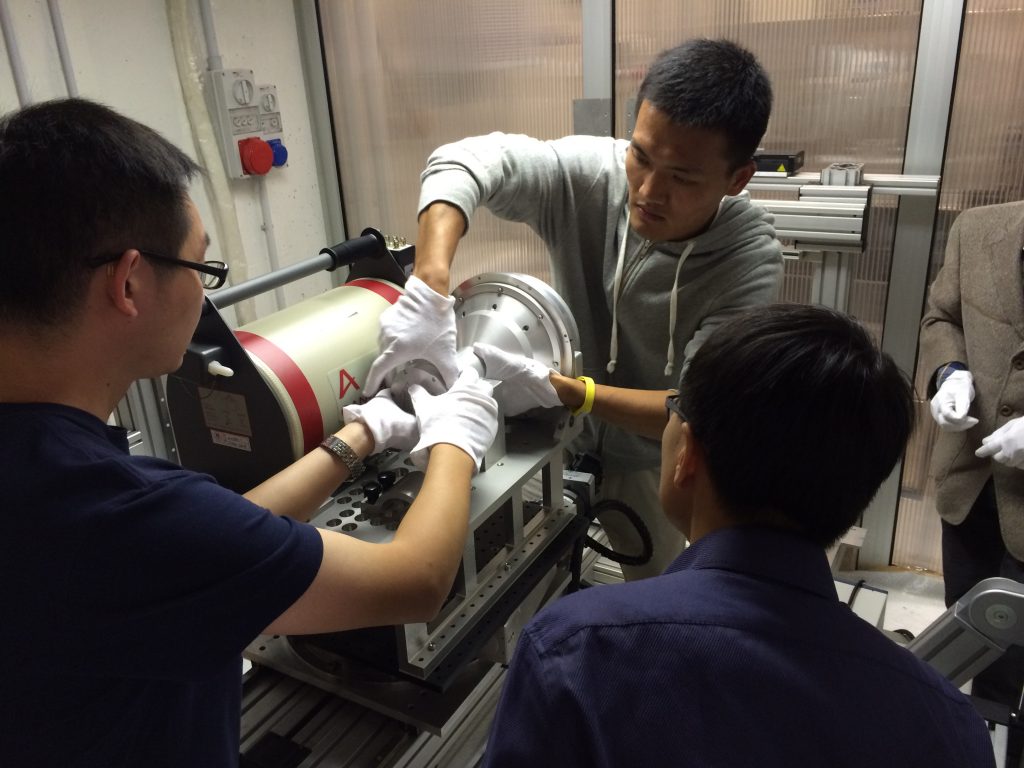HXMT
PI: Shuangnan Zhang (张双南)
The Insight-Hard X–ray Modulation Telescope (HXMT) is the first Chinese X-ray astronomy satellite. Its scientifica payload is constituted by three main instruments: the high energy X-ray telescope (20-250 keV, 5100 cm2), the medium energy X-ray telescope (5-30 keV, 952 cm2), and the low energy X-ray telescope (1-15 keV, 384 cm2).
The high energy telescope consists of 18 cylindrical High Energy Detectors (HEDs), each formed by a phoswich module and its collimator. Each detector unit is a NaI(Tl)/CsI(Na) phoswich scintillation detector with a diameter of 19.6 cm. The thickness of the NaI main detector is 3.5 mm, while that of the CsI shielding is 40 mm. A 5-inch PMT is used to collect the fluorescence of both NaI and CsI crystals.


Left: the High Energy X-ray Telescope (HE) aboard HXMT. Right: instrument package of the HXMT satellite. Credits: the Insight-HXMT collaboration.
Two HEDs, coded Z01-23 and Z01-24, have been tested at the LARIX–A facility at the beginning of October 2015. The calibration campaign planned the sweeping of the HED crystals by a monochromatic X–ray beam in 27 different positions. After fixing the X–ray beam energy (calibrated by means of a Canberra spectrometer), each position was illuminated by the 5×5 mm2 beam, and the corresponding data acquired by the HED electronics and saved.
At the end of each measurements, a background spectrum was accumulated (obtained by closing the slit in front of the X–ray beam, and leaving the monochromator crystals in the diffraction condition), and used to obtain the net background subtracted spectrum.


